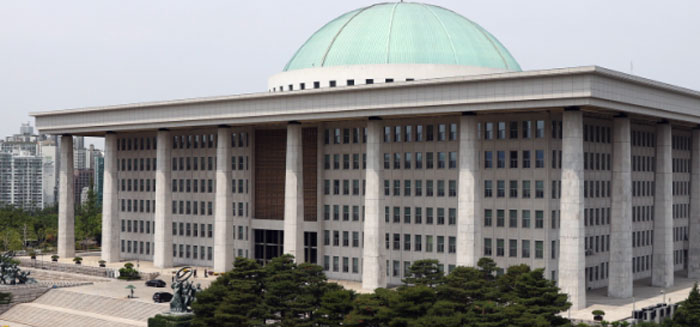국회 본회의에서 학생맞춤통합지원법과 도시형캠퍼스 특별법을 포함한 2건의 제정안과 9건의 개정안이 통과되면서 공교육 체계의 질적 향상을 도모하는 중요한 출발점이 된 것은 분명하다. 그러나 이번 법안들이 강조하는 ‘학생 맞춤’이라는 방향성에도 불구하고, 학생이 주체가 아닌 지원의 대상으로만 규정된다는 점은 여전히 아쉬움을 남긴다. 이는 학생 권리와 주체성을 명확히 보장하지 못한 법안들의 구조적 한계에서 비롯된다.
학생맞춤통합지원법은 복잡한 문제를 겪는 학생들에게 교육청과 지자체가 협력하여 적시에 통합 지원을 제공하는 체계를 구축하는 것을 목표로 한다. 이는 학습권 보장과 교육 복지 강화라는 점에서 긍정적으로 평가되지만, 법안이 전적으로 보호자 동의와 행정적 판단에 의존하며, 정작 학생 스스로의 목소리와 참여를 반영할 체계를 갖추지 못했다는 점에서 비판을 받을 수 있다. 학생을 지원의 대상으로만 바라보고, 주체적 권리와 역할을 보장하지 못한 부분은 법안의 실효성을 약화시킬 가능성이 있다.
더불어, AI 디지털교과서 활용이나 학교폭력 사안 처리와 같은 분야에서도 학생의 목소리가 충분히 반영되지 못했다. AI 디지털교과서를 교육자료로 규정한 초·중등교육법 개정안은 학교의 자율성을 보장한다는 평가를 받았지만, 기술 활용에 대한 학생들의 관점이 정책 과정에서 체계적으로 수렴되지 않았다는 점은 한계로 지적된다. 학교폭력예방법 개정을 통해 학교폭력전담조사관 제도의 법적근거가 강화되었으나, 조사 과정에서 학생인권에 대한 이해 부족과 학생을 주체적인 의견반영 체계가 부재하다는 점은 공정성과 신뢰성을 저해할 우려가 있다.
학생인권과 관련해서도 명확히 확립되지 못한 점은 이번 입법의 주요 아쉬움으로 꼽힌다. 학생인권조례와 같은 기존 정책들이 지역별로 큰 차이를 보이는 상황에서, 국가 차원의 통일된 학생인권 보장 체계가 마련되지 않은 점은 개선의 여지를 남긴다. 학습권과 복지 강화의 취지가 담긴 학생맞춤통합지원법에서조차 학생의 주체적 권리를 명문화하지 못했다는 점은 이러한 한계를 보여준다.
교육기본법 개정으로 교원의 교육활동과 학생생활지도 권한이 법적으로 명시되면서 교권 보호의 법적 근거가 마련된 점은 진전으로 평가된다. 그러나 교사노조와 전교조는 현장에서 실질적으로 체감할 수 있는 효과가 부족하며 추가 입법이 필요하다는 점을 지적했다. 교총은 이를 바탕으로 시·도 교육청별 교권 보호 예산 확보와 관련 조례 제정이 이루어져야 한다고 주장하며 교권 보호 강화를 위해 지속적인 노력을 촉구하고 있다.
이번 법안들은 공교육 체계의 질적 향상을 위한 법적 기반을 마련했다는 점에서 의미가 크다. 하지만 각 교원단체들은 실효성을 담보하기 위해 충분한 재정 확보와 행정 지원, 교원의 부담 경감이 동반되어야 한다고 입을 모은다. 또한, ‘학생맞춤’이라는 이름에 걸맞게 학생이 정책의 주체로 자리 잡도록 하는 후속 조치가 반드시 필요하다. 물론 교원단체들은 이에 대한 관심은 없다. 하지만 학생의 의견을 반영하고 권리를 보장하는 체계가 갖춰지지 않는다면, 이번 입법의 목표는 단순히 학생을 관리의 대상으로 전락시키는 데 그칠 위험이 있다. 공교육 체계의 신뢰 제고와 진정한 질적 향상을 위해서는 학생의 권리가 단순한 수혜적 차원이 아닌, 주체적 권리로서 확립되어야 할 것이다.
[ 관련 기사 ]
In the plenary session of the National Assembly, two bills including the Student-Centered Integrated Support Act and the Special Act on Urban Campuses, and nine amendments were passed, marking a significant starting point for improving the quality of the public education system. However, despite the emphasis on 'student-centered' direction in these bills, it is regrettable that students are still defined only as the subjects of support, not as the main actors. This stems from the structural limitations of the bills that fail to clearly guarantee student rights and autonomy.
The Student-Centered Integrated Support Act aims to build a system where the education office and local governments cooperate to provide timely integrated support to students facing complex problems. While this is positively evaluated for ensuring the right to learn and strengthening educational welfare, it can be criticized for relying entirely on the consent of the guardian and administrative judgment, and failing to reflect the voices and participation of the students themselves. Viewing students only as the subjects of support and failing to guarantee their autonomous rights and roles may weaken the effectiveness of the bill.
Moreover, the voices of students were not sufficiently reflected in areas such as the use of AI digital textbooks and handling school violence cases. The amendment to the Elementary and Secondary Education Act, which defines AI digital textbooks as educational materials, has been praised for ensuring the autonomy of schools, but it is pointed out as a limitation that the students' perspectives on technology use were not systematically incorporated in the policy process. Although the legal basis for the school violence investigator system has been strengthened through the amendment of the School Violence Prevention Act, the lack of understanding of student rights in the investigation process and the absence of a system for reflecting student opinions could undermine fairness and credibility.
The lack of clear establishment of student rights is also cited as a major regret of this legislation. In a situation where existing policies such as the Student Rights Ordinance vary greatly by region, the lack of a unified student rights protection system at the national level leaves room for improvement. Even the Student-Centered Integrated Support Act, which embodies the purpose of strengthening the right to learn and welfare, fails to explicitly articulate the autonomous rights of students, demonstrating these limitations.
The amendment to the Basic Education Act, which legally specifies the authority of teachers' educational activities and student life guidance, is evaluated as progress in that it provides a legal basis for protecting teachers' rights. However, the teachers' unions and the Korean Teachers and Education Workers Union pointed out that there is a lack of tangible effects on the ground and additional legislation is needed. The Korean Federation of Teachers' Associations has been calling for continuous efforts to strengthen the protection of teachers' rights, arguing that budgets for protecting teachers' rights should be secured by city and provincial education offices and related ordinances should be enacted.
These bills are significant in that they provide a legal basis for improving the quality of the public education system. However, all teachers' associations agree that sufficient financial support, administrative support, and reduction of teachers' burdens should accompany to ensure effectiveness. In addition, follow-up measures are absolutely necessary to ensure that students, in line with the name 'student-centered', take their place as the main actors of the policy. Of course, teachers' associations have no interest in this. However, if a system that reflects students' opinions and guarantees their rights is not established, the goal of this legislation may simply reduce students to the subjects of management. For the enhancement of trust in the public education system and genuine quality improvement, students' rights should be established not merely as beneficiaries, but as autonomous rights.
[ Related Articles ]

